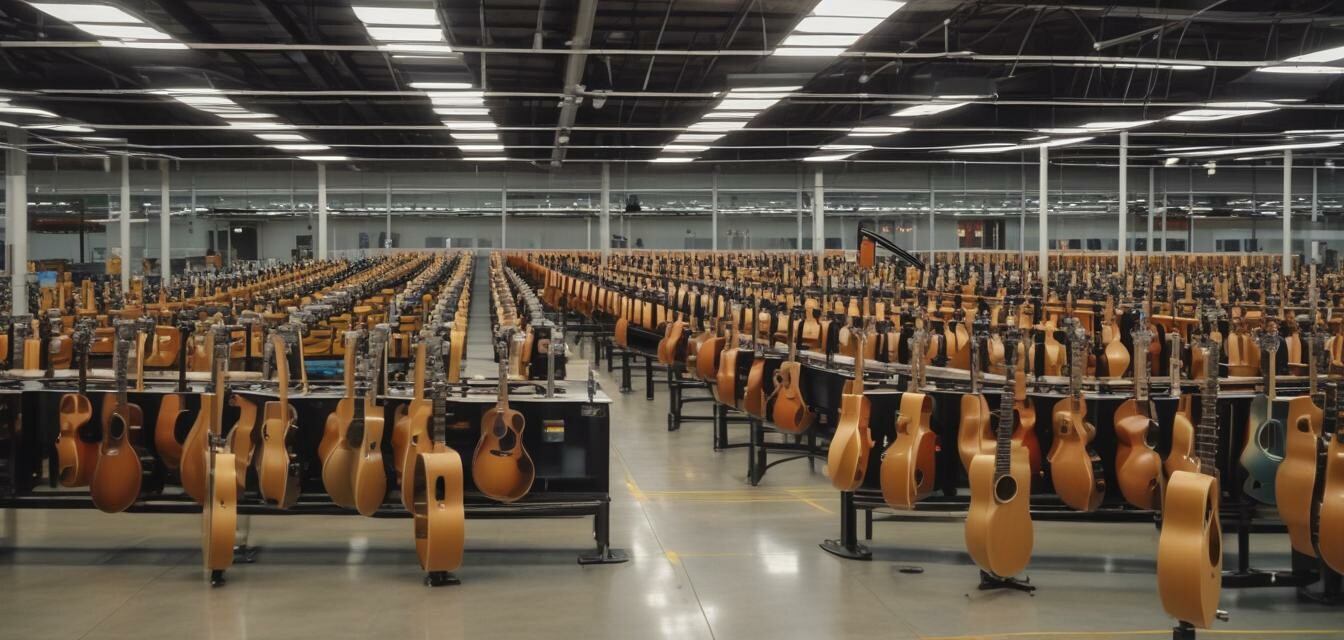
The Future of Fender’s Manufacturing Techniques
Key Takeaways
- Fender is embracing innovative technology to enhance manufacturing efficiency.
- Sustainability plays a crucial role in their production processes.
- Emphasis on quality control ensures superior sound and durability.
- Adoption of new materials and eco-friendly practices is on the rise.
- Monitoring trends in guitar technology helps Fender remain competitive.
As we enter 2025, Fender has set its sights on revolutionizing the way they manufacture their guitars. This article delves into the exciting advancements taking place at Fender’s factories, focusing on innovations that enhance quality, promote sustainability, and embrace the latest technology. Whether you’re a seasoned musician or a curious observer, understanding these changes can provide valuable insight into the future of guitar craftsmanship.
Innovative Manufacturing Processes
Fender is known for its dedication to crafting high-quality guitars. In recent years, the company has invested heavily in developing and integrating advanced manufacturing techniques. Let's explore some of the key trends shaping the future of Fender’s manufacturing:
| Technique | Description |
|---|---|
| Computer Numerical Control (CNC) | CNC machines provide precise cutting and shaping, allowing for intricate designs and consistent quality. |
| 3D Printing | Used for prototyping, 3D printing allows Fender to create complex shapes that might be difficult with traditional methods. |
| Automation | Automated processes increase efficiency, reduce waste, and maintain high standards of production. |
| Eco-friendly materials | Adopting sustainable materials reduces environmental impact while producing durable instruments. |
Quality Control Innovations
Quality assurance is at the heart of Fender's operations. The company employs various strategies to ensure that every guitar meets its high standards. Some innovations in quality control include:
- Digital Testing: Utilizing software for tonal quality testing that surpasses traditional methods.
- Data-Driven Decisions: Analyzing production data helps identify areas for improvement in the manufacturing cycle.
- Expert Craftsmanship: Skilled luthiers continue to play a vital role in checking and fine-tuning each instrument.
Sustainability Initiatives
Sustainability is no longer just a trend; it has become a strategic focus for Fender. Here are some key initiatives they are implementing:
| Initiative | Impact |
|---|---|
| Recycled Materials | Using reclaimed wood and other recycled components to craft new instruments, thereby reducing waste. |
| Energy-Efficient Production | Investing in energy-efficient machinery and processes to lower carbon footprints in production. |
| Plastic Reduction | Minimizing the use of plastics in packaging and manufacturing processes. |
Monitoring Trends in Guitar Technology
Fender stays ahead of the curve by keeping an eye on both consumer and technology trends. This proactive approach has led to:
- Emerging player preferences influencing guitar design and features.
- Integration of electronics aimed at enhancing sound quality and playability.
- Collaboration with artists for feedback that shapes product innovations.
For enthusiasts looking to deepen their knowledge, visiting our pages on buying guides and expert tips can offer insight into finding the right Fender guitar that fits both current trends and personal style.
Conclusion
As Fender continues to innovate its manufacturing techniques and embrace sustainability, it signals a bright future for guitar craftsmanship. Whether through advanced technology, quality assurance measures, or greener practices, Fender is evolving to meet the demands of both musicians and environmental considerations.
Staying aware of these trends can help you understand not just the guitars themselves, but also the values they represent in today's musical landscape. For the latest updates on new guitar models and enhancements, keep an eye on our News and Trends section.
Pros
- Innovative manufacturing techniques enhance guitar quality.
- Sustainable practices contribute to environmental conservation.
- Focus on quality control ensures lasting products.
Cons
- Transition to new technologies may incur initial costs.
- Adapting to sustainability requirements could limit certain materials.